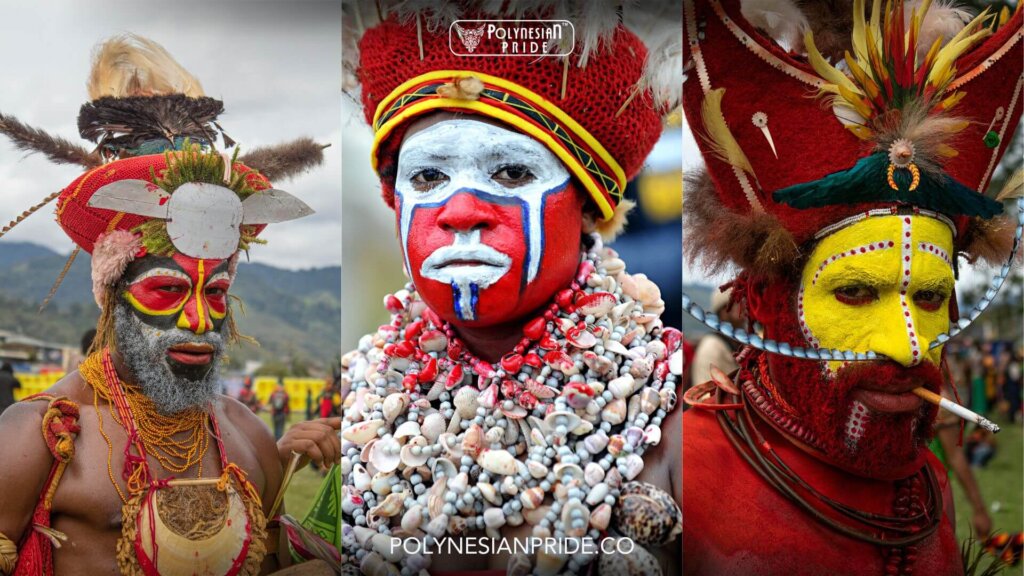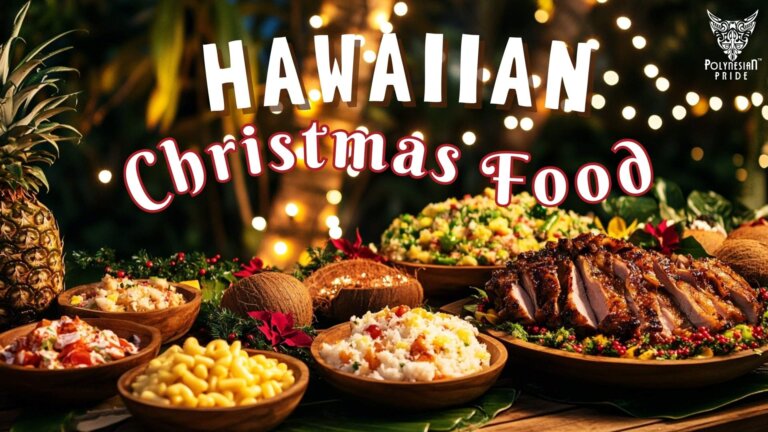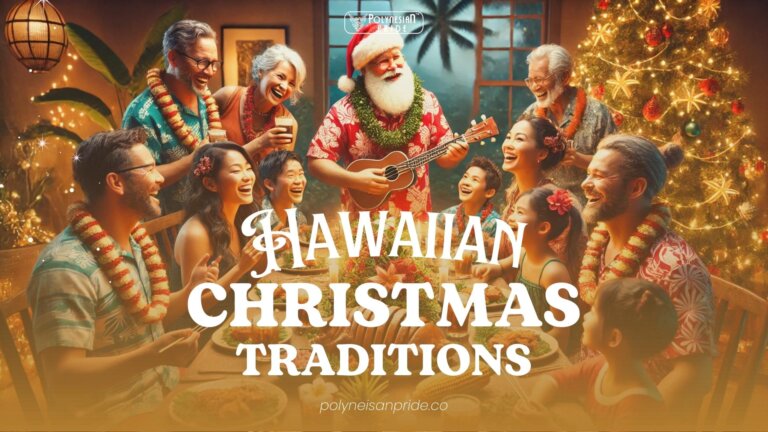Papua New Guinea Culture: Embrace The Rich Cultural Legacy

INTRODUCTION
Papua New Guinea, nestled in the southwestern Pacific Ocean, is not just a land of pristine landscapes and biodiversity; it is also a mosaic of cultures, each unique and deeply rooted in history. From the remote highlands to the coastal regions, Papua New Guinea’s cultural diversity is a testament to its rich tapestry of traditions, beliefs, and practices. This article delves into the multifaceted aspects of Papua New Guinea culture, exploring its origins, regional variations, critical cultural practices, challenges, preservation efforts, and the role of tourism in cultural awareness.
The Origin Of Papua New Guinea Culture

The Melanesian Heritage
The cultural heritage of Papua New Guinea originates from the Melanesian people, who first settled on the islands thousands of years ago. Melanesian culture, including aspects of Papua New Guinea culture, features a close relationship with the natural environment, intricate kinship systems, and vibrant artistic expressions. These foundational elements continue to shape Papua New Guinean identity and society today, influencing everything from daily customs to spiritual beliefs.
European Exploration
European contact began in the early 16th century, with Portuguese and Spanish navigators likely being the first Europeans to see Papua New Guinea. Portuguese explorer Don Jorge de Meneses discovered the principal island around 1526 – 1527, earning credit for its European discovery. Despite various European explorations over the next 170 years, Papua New Guinea remained largely isolated until the late 19th century.

Papua and New Guinea Culture
Transitions between German, British, and Australian administrations mark the early European settlement of Papua and New Guinea. From the establishment of German New Guinea and British Papua to their eventual unification under Australian governance, these historical events laid the foundation for the modern state of Papua New Guinea.
In 1920, the British Government, representing the Commonwealth of Australia, received a League of Nations mandate to govern the Territory of New Guinea, administered by Australia until the Japanese invasion in December 1941. After World War II, Japan surrendered in 1945, and civil administration resumed. Under the Papua New Guinea Provisional Administration Act of 1945 – 1946, Papua and New Guinea unified to form Papua New Guinea.
The Land Of Thousand Cultures
Linguistic Diversity
The sheer number of languages spoken in Papua New Guinea is unparalleled (more than 800 languages), with each language reflecting the unique identity of its speakers. Tok Pisin, English, and Hiri Motu are the official languages, facilitating communication among different language groups.
Papua New Guinea communities deeply embed these languages as communication tools integral to their culture. They carry each group’s oral histories, traditions, and wisdom passed down through generations. Large communities speak some languages, while others are used by just a few hundred people, highlighting the immense diversity even within a relatively small population. Tok Pisin, English, and Hiri Motu are the official languages, facilitating communication among different language groups.
Home To More Than 750 Tribes
With over 750 tribes, Papua New Guinea boasts one of the most diverse cultural tapestries in the world. Each tribe has its distinct identity, often defined by language, customs, and traditional practices. The tribal identity is paramount, influencing social structures, governance, and daily life. Understanding these tribes provides insight into the broader cultural and social dynamics of Papua New Guinea.
Highland Cultures
The rugged highlands’ cultures are vibrant and distinct, known for their elaborate ceremonies and traditional practices. The highlanders are renowned for their impressive sing-sings (cultural festivals), where tribes celebrate with music, dance, and elaborate costumes, showcasing Papua New Guinea culture. These gatherings often feature intricately designed headdresses and body paint, each telling a story and representing the wearer’s clan and social status.
Coastal Cultures
The coastal regions of Papua New Guinea boast equally rich cultural traditions but with different influences and practices, reflecting Papua New Guinea culture. Coastal tribes are famous for their maritime skills, traditional canoe-building, and fishing techniques. Their cultural ceremonies often involve storytelling, song, and dance that reflect their close relationship with the sea. Coastal art is also distinctive, with stunning carvings, woven mats, and intricate shell jewelry, vital elements of their cultural expression.

Social Values in Papua New Guinea Culture
The Three Main Values
The three central values that underpin all Papua New Guinea cultures are the Wantok system, reciprocity, and keeping time with the sun. The Wantok system, which translates to “one talk,” embodies a sense of community and mutual support, ensuring that their extended family and friends always care for individuals within a group.
Reciprocity is a fundamental aspect of social interactions, where giving and receiving gifts or services is a way to build and maintain relationships and social harmony.
Keeping time with the sun reflects the traditional way of life, where daily activities are closely aligned with natural light cycles, emphasizing a deep connection to the environment and natural rhythms. These values are integral to maintaining the rich cultural fabric and social cohesion of Papua New Guinea’s diverse tribes.
Kinship Systems
At the core of Papua New Guinean social structure are kinship systems that govern community relationships, responsibilities, and rights. These systems determine familial ties, inheritance patterns, and roles during communal activities and ceremonies. Kinship is a basis for social organization and a framework for mutual support, ensuring cohesion and unity among clan members in everyday life and during significant cultural events.
Spirituality and Belief Systems
Religion in Papua New Guinea is predominantly Christian, with the Catholic Church holding a significant portion of the population. Alongside Christianity, traditional animism and ancestor worship are prevalent, either subtly intertwined with Christian practices or openly coexisting.
Traditional spirituality encompasses animistic beliefs, ancestor veneration, and rituals tied to natural phenomena and ancestral spirits. These practices deeply integrate into daily life and influence decisions related to agriculture, health, and interpersonal relationships.
Despite the introduction of Christianity by 19th-century missionaries, indigenous belief systems remain vital to cultural identity. Many communities engage in syncretic spirituality, blending traditional customs with Christian teachings, thus preserving a rich, diverse religious landscape.

Papua New Guinea Culture And Customs
Initiation Rites
Initiation rites in Papua New Guinea signify the transition from childhood to adulthood, often involving physical endurance tests, scarification, or other symbolic acts essential for maintaining tribal identity and continuity. One notable ceremony is the wagan initiation, which celebrates the return of the ancestral crocodile. During this ceremony, young men are initiated into manhood by having their chest, back, and buttocks cut with a bamboo sliver. This ritual tests their physical strength and self-discipline, reinforcing their role within the tribe and honoring traditional customs.
Sing-Sings Ritual
In the New Guinea highlands, vibrant local rituals known as “sing-sings” are a cultural highlight. During these events, participants paint their bodies and adorn themselves with feathers, pearls, and animal skins to embody birds, trees, or mountain spirits. These colorful celebrations are a vital expression of cultural heritage, showcasing the region’s rich traditions and deep spiritual connections.

Funeral Practices
In Papua New Guinea, Melanesian tribal death practices are rooted in the animistic belief that everything in the natural world possesses a spirit and that death signifies a critical transition to an invisible realm. Guineans hold that while the living may not perceive everything, the dead have omniscient awareness. Elaborate rituals, including body paint, masks, and communal mourning, express profound reverence for the deceased.
Funeral traditions in Papua New Guinea, particularly in the Highlands, involve complex burial rituals, such as women singing funeral songs to honor the dead. In the Highlands and Oro Province, mourners often coat their bodies and faces with white or yellow clay, reflecting their deep respect and connection to the departed.
Papua New Guinea Marriage Culture
Papua New Guinea’s marriage culture is deeply rooted in tradition and community. Traditional practices include arranged marriages, where families play a pivotal role in matchmaking to strengthen social ties and preserve cultural heritage.
These marriages are marked by elaborate rituals, including the exchange of bride prices and ceremonial customs that vary across regions. Weddings are community celebrations involving feasting, music, and dance, reinforcing social bonds and cultural values.
In Papua New Guinean marriages, men traditionally define gender roles as providers, while women manage household affairs. However, modern influences are reshaping these dynamics, with younger generations increasingly opting for love marriages and integrating modern elements into traditional ceremonies.

The Art And Craft in Papua New Guinea Culture
Diverse Traditional Art Forms
Art and craftsmanship are essential to Papua New Guinean culture, which showcases a diversity of traditional forms such as wood carvings, pottery, weaving, and painting. Papua New Guinea has a long, rich, and diverse artistic tradition, globally renowned for carved wooden sculptures, including masks, canoes, and storyboards. Additionally, the country features a wide array of art using clay, stone, bone, animal materials, and natural dyes, with many exceptional pieces housed in museums abroad.
Regional Artistic
Each region specializes in unique styles: the Sepik River for intricate wood carvings, the Trobriand Islands for woven baskets, and the Highlands for vibrant bilum bags. These artworks carry deep cultural meanings, often depicting ancestral stories and spiritual beliefs. Artists use locally sourced materials like wood and natural fibers, maintaining a solid connection to the environment and heritage.

Papua New Guinea Cultural Dance and Music
The Victory Dance
In Papua New Guinea culture, the victory dance stands out as a widely practiced and cherished tradition. This dance is deeply rooted in the warrior culture of various tribes, showcasing the skills and prowess developed through training for tribal wars and hunting expeditions. It is a powerful expression of triumph, honing warriors’ bravery and strategic abilities. The victory dance celebrates battle success and reinforces communal bonds and cultural identity within Papua New Guinean societies.
Traditional Instruments
Traditional instruments in Papua New Guinea vary widely across different regions and tribes, each contributing unique sounds and styles to the country’s musical landscape. Some standard traditional instruments include:
Kundu: A drum carved from a hollowed tree trunk covered with a stretched lizard skin membrane. The Kundu drum produces deep, resonant tones; musicians often use it in ceremonial dances.
Garamut: A slit drum carved from a hollowed log, traditionally used for communication over long distances and in ceremonial music.
Panpipes: made from bamboo or reed tubes of varying lengths, produce melodic sounds used in traditional songs and dances.
Bamboo Flutes: Simple bamboo tubes with holes drilled into them, creating a range of notes for melodies and accompanying music.

Papua New Guinea Culture Clothing
Traditional Attire of Papua New Guinea Culture
Traditional attire in Papua New Guinea, influenced by over 750 distinct tribes, features garments made from natural materials like bark cloth, plant fibers, and feathers. Men typically wear loincloths or grass skirts, while women adorn themselves with skirts with shells or woven fibers. These outfits are intricately decorated with natural pigments, symbolizing social status and ceremonial significance.
Significance of Headdresses
Headdresses in Papua New Guinea are symbolic of social status and cultural identity. Artisans craft them from bird feathers, shells, and animal skins. Headdress Worn during ceremonies and festivals, every element signifies tribal affiliations, achievements, and roles within the community, embodying spiritual and cultural values.
Body Decorations and Tattoos
Body decorations and tattoos hold deep cultural meanings in Papua New Guinea, signifying rites of passage and spiritual beliefs. Tattoos, created using traditional methods with natural pigments, mark important life events like maturity and marriage. Body paint, applied in intricate designs using natural pigments, serves decorative and ceremonial purposes, symbolizing spiritual protection and cultural heritage.
Materials and Techniques
Traditional clothing in Papua New Guinea utilizes bark cloth, woven fibers, and animal skins adorned with natural dyes and intricate patterns. Techniques like weaving and beadwork are passed down through generations, preserving cultural identity and craftsmanship.
Ceremonial Clothing
Ceremonial clothing plays a crucial role in Papua New Guinea’s cultural heritage. It features elaborate designs with feathers, shells, and traditional motifs. During sing-sings and other rituals, people wear these outfits to honor ancestors, celebrate traditions, and strengthen community bonds.

Papua New Guinea Culture Food
Key Ingredients
Papua New Guinean cuisine is as diverse as its culture, reflecting the country’s rich natural resources and regional variations. Traditional foods primarily use locally sourced ingredients, including tubers, fruits, and tropical vegetables. Selected staples include taro, sweet potatoes, yams, and sago, often accompanied by greens and protein sources like pork, chicken, and fish.
Traditional Cooking Methods
Cooking methods in Papua New Guinea are traditional and communal, often involving earth ovens called mumu. A mumu wraps food in banana leaves and cooks it over hot stones in a pit. This method produces tender and flavorful dishes for large gatherings and ceremonies. Another popular method is roasting over open fires, which imparts a smoky taste to meats and vegetables.
Signature Dishes
Sago: is derived from the sago palm tree and offers a starch similar to cassava or tapioca pearls. It is versatile in various dishes, from sweet pancakes to savory porridge and bread.
Saksak: a traditional dish that combines sago pearls with mashed bananas and coconut milk, steamed in banana leaves. saksak, Known for its sweet, slightly chewy texture, is favored as a breakfast item or a delightful sweet snack.
Mumu: is a traditional cooking method in Papua New Guinea made from vegetables, starches, and meat are wrapped in banana leaves and steamed over hot stones in an earth pit. During our Firedance Festival trip, we can enjoy mumu as part of a traditional Melanesian welcome ceremony, typically reserved for significant celebrations like weddings.
Kokoda fish: native to Papua New Guinea and Fiji, is prepared ceviche-style by marinating cubes of raw fish in lime juice, coconut milk, sliced onions, and fresh herbs. This dish showcases the region’s local flavors and culinary traditions.

Best Culture Festivals Must Experienced
Goroka Show
The Goroka Show, held annually in September in Goroka, Eastern Highlands Province, is a vibrant cultural festival that showcases Papua New Guinea’s diverse tribal heritage through traditional dances, music, and ‘sing-sings.’ Tribes adorned in elaborate attire perform rhythmic drumming and chanting, sharing unique customs and storytelling. Artisans exhibit conventional crafts like weaving and carving, enhancing cultural immersion and offering souvenir opportunities.
Travelers should book accommodations early due to high demand, arrive promptly for optimal viewing and local interactions, and carry cash for purchasing crafts and supporting vendors. The Goroka Show boosts tourism and offers a unique chance to witness and appreciate the country’s rich cultural tapestry and Indigenous traditions.
Hagen Show
The Hagen Show in Papua New Guinea is held annually, typically in August. It highlights the cultural diversity of the Highlands region with traditional dances, sing-sings, and elaborate tribal costumes. Travelers should book accommodations well and consider attending early to secure optimal viewing spots and interact with locals. Carrying cash is advisable for purchasing crafts and supporting local vendors.
National Mask & Warwagira Festival
The National Mask & Warwagira Festival is organized annually in July in East New Britain Province. It features mesmerizing mask performances, traditional music, and spiritual rituals honoring ancestral spirits.
Due to high demand during the festival, we recommend travelers book accommodations early. Arriving early allows for better viewing of performances and interactions with artists. It’s also wise to carry cash to purchase crafts and souvenirs.
Kutubu Kundu & Digaso Festival
Celebrated annually in the Southern Highlands, the Kutubu Kundu & Digaso Festival showcases unique music and dance traditions, including the rhythmic beats of kundu drums and vibrant displays of traditional attire. The festival typically occurs in October. Travelers should plan accommodations ahead of time, as options can be limited. Arriving early in the festival ensures a better experience and the opportunity to witness cultural performances up close. Carrying cash is recommended for purchasing crafts and supporting local artisans.

CONCLUSION
In conclusion, Papua New Guinea’s cultural diversity is a source of pride and resilience, reflecting centuries of adaptation and preservation in the face of external pressures. From the ancestral wisdom of Melanesian forebears to the dynamic expressions of contemporary artistry, Papua New Guinea’s culture continues to evolve while honoring its roots. As the country navigates modern challenges, concerted efforts to safeguard cultural heritage are essential for promoting understanding, respect, and appreciation of the world’s diverse cultural tapestry.
FAQs
1. What facts about Papua New Guinea culture?
Papua New Guinea boasts over 800 distinct languages and a wealth of indigenous traditions, making its cultural tapestry incredibly diverse and vibrant.
2. How can tourists experience Papua New Guinea culture firsthand?
Travelers can participate in traditional ceremonies, visit cultural centers, and engage with local communities through responsible tourism practices.
3. What are some traditional art forms of Papua New Guinea culture?
Art forms include intricate wood carvings, ceremonial masks, and vibrant body paintings with deep cultural meanings.
4. How is music important in Papua New Guinea culture?
Music is a form of storytelling, social cohesion, and spiritual expression, featuring diverse instruments and rhythmic styles unique to each region.

I am Leilani Miller – I research focusing on Vanuatu – volcanic landscapes, blue holes, coral reefs & rainforests. I have over five years of experience researching and sharing insights on tourism and environmental activism. Explore and experience without limits through my latest article.
Contact information:
Email: [email protected]
Tel: +1 (808) 555-1528






